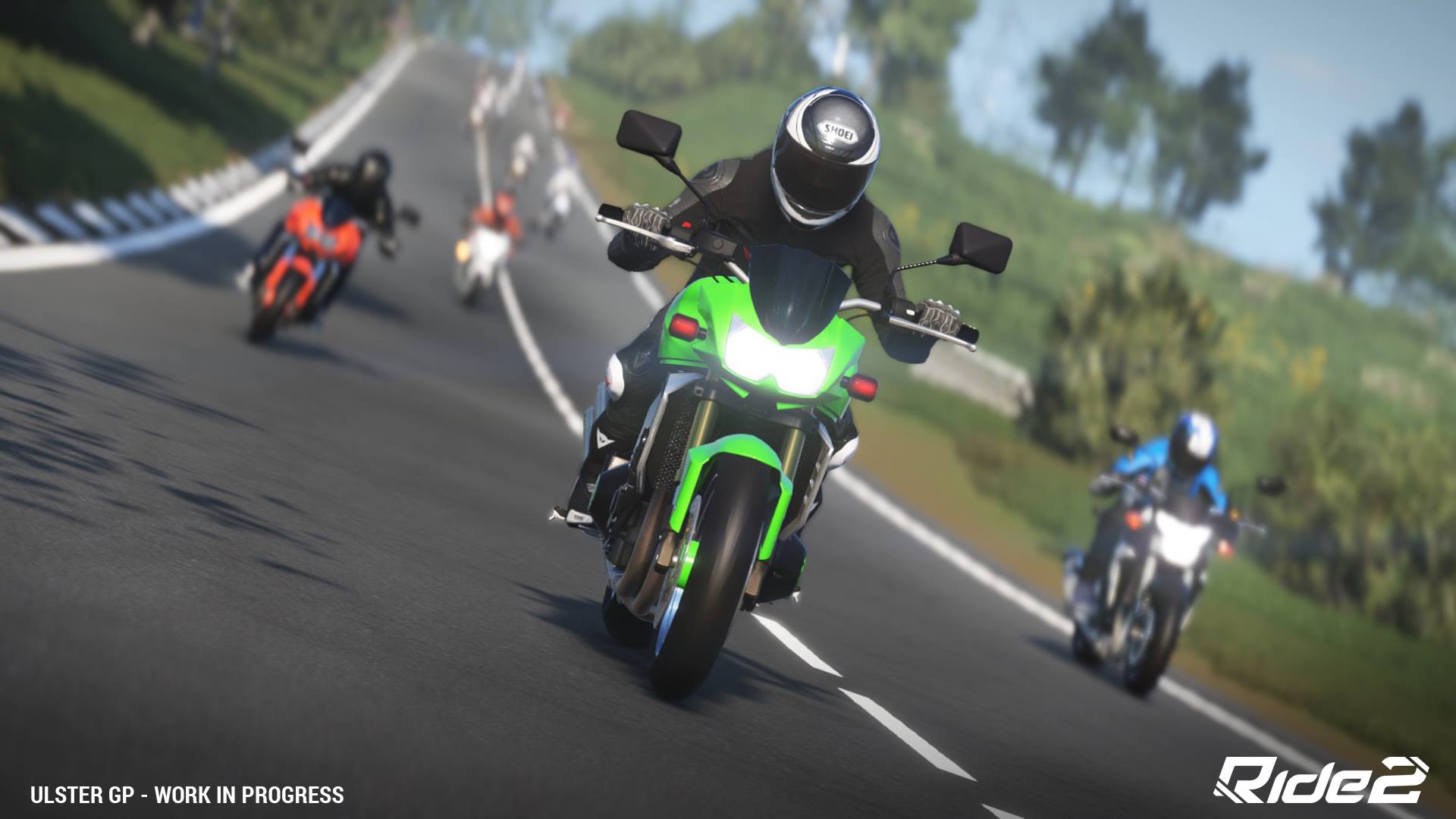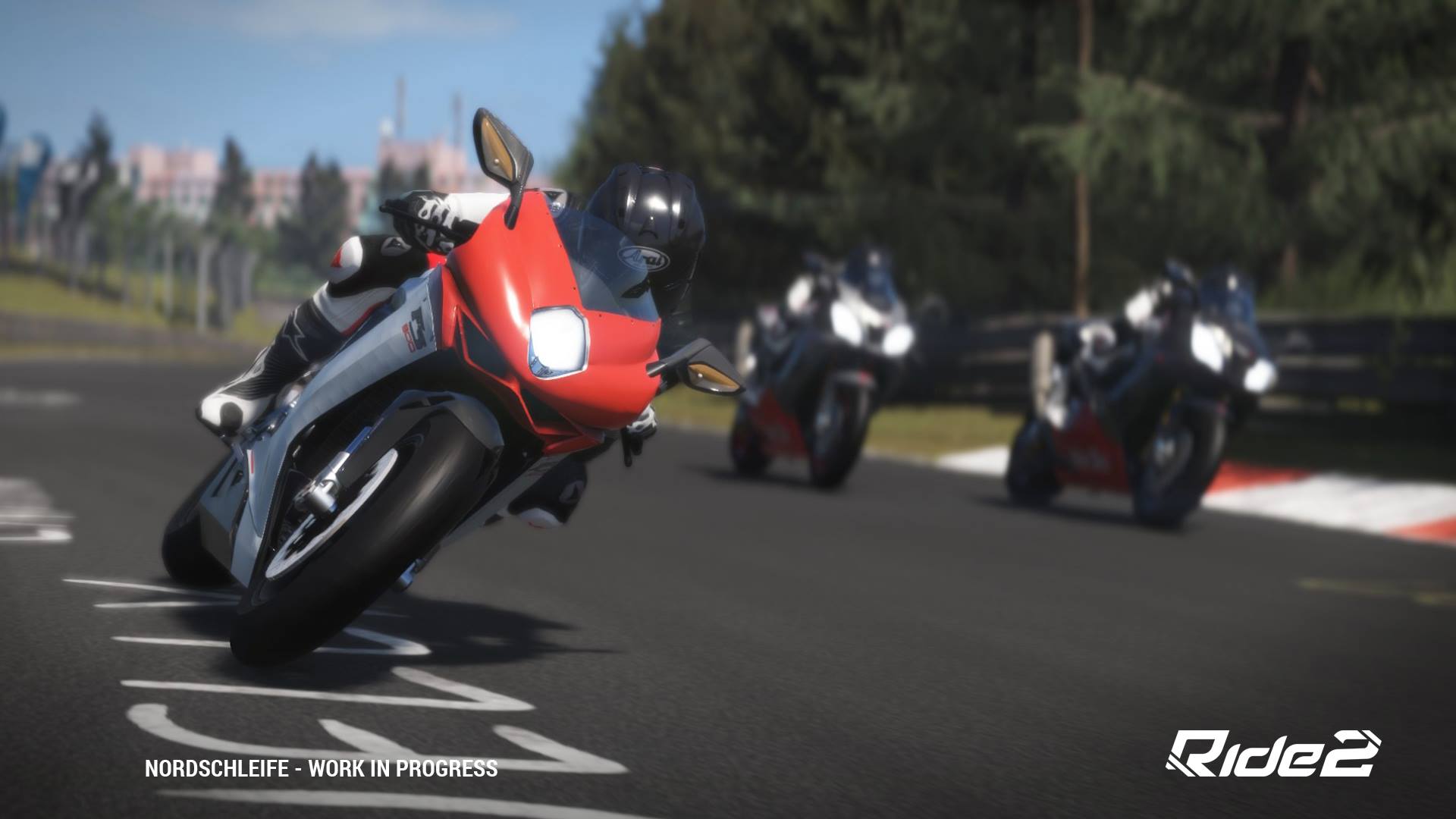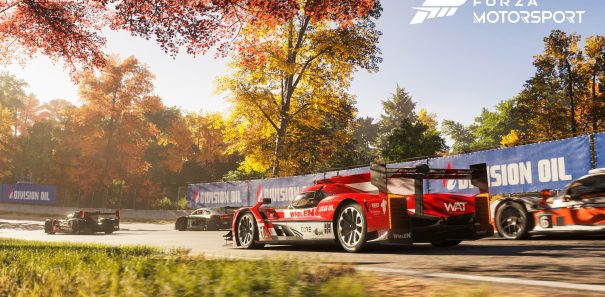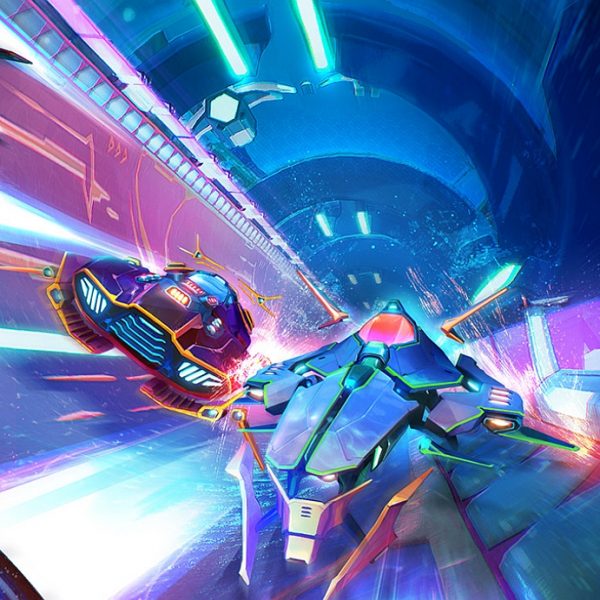For the first time in years, bike racing game fans are spoilt for choice. Previously, if you wanted to race bikes instead of cars in a game, your choice was limited to the annualised MotoGP series, or possibly a dirt bike game if you were lucky. And yet this year has been saturated with bike games, the majority of which made by the same developer. Surely, then, there can’t possibly be room for yet another one in this increasingly crowded market.
Ride 2 is Italian developer Milestone’s fourth bike game and fifth overall released this year following Sébastien Loeb Rally EVO, MXGP 2, Ducati 90th Anniversary The Official Videogame and Valentino Rossi: The Game. It’s certainly an impressive turnaround by a rapidly expanding team that’s clearly passionate about the sport, but quantity doesn’t necessarily result in quality. Indeed, you can see the stretched developer, which don’t forget doesn’t have the resources of its larger competitors, struggling under the strain in some recent releases, while Milestone’s monopoly on the bike racing genre also probably doesn’t help its incentive to innovate.
Ride 2, on the other hand, has the advantage of not being tied to an official license like MotoGP or MXGP, giving the developer more creative freedom and less time constraints – the result is easily Milestone’s best game released this year by a significant margin.

The first Ride game released last year was the start of an ambitious new era for Milestone, an original IP with the aim to be the Gran Turismo of bike games. Essentially, it was the current-gen equivalent of Polyphony’s long-forgotten bike spin-off Tourist Trophy and the first game to offer such a large roster of road bikes in a decade, but a lack of refinement meant it fell short of its potential. Ride 2 continues where the original left off and brings Milestone’s ambition to its fruition, adding more bikes, tracks and game modes to create a truly substantial package for motorcycle enthusiasts.
You get the sense that Milestone has learned from past mistakes in Ride 2, much like Kyltotonn did with WRC 6 – virtually every aspect has been improved in Ride 2. The sleep-inducingly monotone man who guided you through the original game has been replaced with a more inviting, friendly female voiceover, although the dialogue is still somewhat stilted. Loading times have been drastically improved, too: they were so long in Ride that you could comfortably make a cup of tea, but that’s no longer the case in Ride 2. And most importantly, quality control has been increased to prevent Ride’s critical glitches from returning – you can be confident your save files won’t get corrupted in Ride 2.
Some of Milestone’s old habits still linger, though. Releasing Ride 2 on the same day as WRC 6 probably wasn’t the best sales tactic, and, as with every recent Milestone game, the game still forces you to create your rider avatar as soon as you start, but at least the developer remembered to add female riders as an option this time. Mercifully however, it’s a much swifter process than before. Menus are kept to a minimum, and within minutes you’re weaving through winding roads that form the new Greek Mountain track, which acts as a fitting introduction to Ride 2’s riveting road circuits.
On the road again
One of our chief complaints about the original Ride was its meagre selection of tracks in contrast to its substantial bike selection. This has been duly rectified in Ride 2, which has no less than 30 tracks – that’s double the amount of last year’s entry.

The fictional road tracks in the original game were designed to resonate with bikers who enjoy riding down country roads on a sunny Sunday afternoon, but the generic designs left a lot to be desired. While some of these circuits return in Ride 2, such as the French Riverera, Miami and Japan Kanto Temple street circuits, the standout additions, without question, are the intimidating Northwest 200 and Ulsta GP circuits based on the annual road races held in Ireland, which, like the infamous Isle of Man TT, have seen many fatalities.
These tracks are unnervingly narrow and not for the faint hearted – you have to respect the fearless riders that do it for real. The abundance of trackside hazards such as lamp posts and street signs are lethal since one wrong move can catapult you into the nearest brick wall, while the neverending straights allow for flatout speeds of over 200 mph, adding an element of risk and danger that was sorely lacking in the original game. The sense of speed will make you legitimately sweat – such thrills were fleeting in Ride, yet frequent in Ride 2. Sadly, the Isle of Man TT Circuit, which remains one of the most requested tracks in any racing game, is still nowhere to be seen in Ride 2: you’ll have to wait until the release of Kylotonn’s officially licensed Isle of Man TT game next year. Still, the Northwest 200 and Ulsta GP are very worthy alternatives in their own right.
There are plenty of iconic real world racing circuits too, the most notable of which being the Nürburgring Nordschleife in its first belated appearance in a Milestone game. Admittedly, Ride 2’s representation of the notorious circuit isn’t the most flattering – after experiencing it in all its laser-scanned glory in Assetto Corsa, the infamous Green Hell appears flat and uninspired in Ride 2. However, while you’ll have experienced these tracks in dozens of car racing games in the last decade, the novelty of racing them on a bike provides fresh new challenges: racing lines and braking points that are etched into your memory suddenly have to be relearned since you have to pre-empt corners to account for the extra time it takes for the rider to physically lean on the bike.

The track selection still isn’t as comprehensive as it could be, though. Licensing issues with MotoGP are perhaps to blame, but it’s strange to see iconic tracks such as Silverstone absent in Ride 2 when they appeared in other Milestone games. It makes sense to separate the Ride franchise from Milestone’s annualised motorsport titles, but it seems a shame not to be able to ride a road bike on these tracks knowing the assets are already available.
The real riding simulator
With over 190 bikes, Ride 2 has by far the largest roster of motorcycles in a racing game, covering 18 manufacturers including Ducati, Triumph and Kawasaki to name a few – a feat that earned it a coveted Guinness World Record.
From superbikes and naked bikes, to the long-requested inclusion of two-strokes and supermotos, there’s a broad selection here that caters for all tastes. Fans of motorcycle racing will also appreciate star-studded inclusions such as Guy Martin’s Triumph Daytona 675R from last year’s Supersport TTs. Hardcore bike enthusiasts will probably notice that Ride 2 uses the same tricks as Gran Turismo to make up the numbers however, with plenty of near-identical models from some manufacturers. The lack of vintage bikes is also disappointing – you won’t find any bike older than 1985 in Ride 2. It’s a shame because this means several eras of iconic motorcycles are abscent, but this will hopefully be rectified with upcoming additional content.
Indeed, Ride 2’s bike roster is set to expand in the coming months. If Ride’s season pass left you feeling short changed with its paltry add-on content, Milestone is planning to support Ride 2 for the long-haul with a raft of paid and free DLC packs adding a further 40 bikes, bringing the total number to well over 200. Calling this a goodwill gesture is pushing it, since some of these extra bikes were already available in the last game (a tactic the Forza series is also guilty of), but it’s still encouraging to see that Milestone has a long-term plan for the franchise.
Another major improvement in Ride 2 is the bike handling, which is simply sublime. Each class has unique characteristics: some are snappy and relatively easy to get to grips with, whereas others require gentle application of the power. In the original Ride, the bikes suffered from monumental understeer which sapped away the enjoyment as you constantly had to slow to a crawl to approach a corner. This is no longer the case in Ride 2. Whether you’re hitting apexes on a high-powered Ducati 899 or cruising country roads on a Triumph Bonneville, controlling the bikes in Ride 2 is fun, intuitive and rewarding.
The more responsive handling makes the game more accessible to newcomers, but there’s still ample challenge if you want it. Ride with the Pro physics activated and anti-wheelie (a bike’s equivalent to traction control) switched off, and balancing the more demanding superbikes is no easy task, requiring some serious finesse with your acceleration and braking inputs to prevent the bike from stepping out. It takes practice to get into a flow, but it’s immensely satisfying when you start consistently nailing the apexes.
There’s still no visual damage, sadly, but crashes look more brutal thanks to Ride 2’s new ragdoll physics. Slam into a rival rider with a well-timed tap, and there’s a good chance you’ll knock them off their bike and send them tumbling down the track – not that using such unlawful tactics to gain an advantage should be encouraged, of course. Indeed, Ride 2 is perhaps too forgiving here: it’s ironic that the game will punish you for cutting corners, yet you can cause deliberate harm to other riders without consequence.

The audio has been vastly improved, too. Audio design has always been a weak point in Milestone games, but claims that the developer has invested in new audio recording techniques seem to be true: it’s difficult to assess how realistic every model sounds, but they certainly sound more authentically distorted than before, but still lacking in environmental effects to make the experience more visceral. I was also pleasantly surprised by the effective use of directional audio when playing with surround sound. My rear speakers were always active, with bikes becoming increasingly louder when they approach you from behind. I never thought I would be praising the audio in a Milestone game. There’s still room for improvement, though: some bikes sound better than others, but it’s still a considerable step up from the last game.
Tour de force
Ride 2’s World Tour acts as the game’s main career mode where you’ll spend most of your time winning races and building up your collection of bikes. At first it seems rather barebones – there’s no interactive office hub, team objectives or sponsor contracts to negotiate, just a simple grid of events split between four main bike classes (Urban, Street, Sport and Racing bikes) and three difficulty tiers. Begin to browse the never-ending selection of events, however, and you begin to realise how exhaustingly extensive the World Tour is – there are hundreds of events to complete, which easily puts it on a par with the scale of Gran Turismo and Forza.
The beauty of Ride 2’s World Tour is its non-linear progression path. Unlike MotoGP and MXGP, you aren’t restricted to a calendar dictating the order you can enter events. As long as you own an eligible bike, you can enter any unlocked event you like. This gives you the freedom and incentive to experiment with different bike classes, but Ride 2’s World Tour isn’t as engaging as Valentino Rossi The Game’s representation of Rossi’s colourful career, with the overall aim simply to climb the world rankings.
Each event forms as part of an eight-race season, which culminates in a one-off invitational event offering bikes and credits as prizes. On top of that there are additional championships to unlock once you achieve enough gold medals in each category, so there’s a wealth of content to keep you busy. Unlocking the later events requires a lot of grinding however, as each difficulty tier can only be accessed after winning an increasingly higher number of gold medals.
It’s fortunate, then, that there is a good variety of event types to ease the repetition. In addition to standard races and time trials, there are also team-based events, track days and a Perfect Trajectory mode lifted from Sebastien Loeb Rally EVO where you set the best time on tracks carved out of cones. Bizarrely, these modes can’t be accessed in quick race, but they can be played with up to 12 online players. If you don’t own many bikes, you can use rental bikes to stay competitive, but you won’t earn any rewards which seems a bit harsh. Trying to find an online game is another matter, though, as the servers are a ghost town.
Visually, Ride 2 continues the trend of every recent Milestone game, with presentation can only be described as adequate. The bikes are well-modelled, but the environments lack polish and fine detail. Frame rate fanatics will also berate Ride 2 for being locked at 30fps when the 60fps sweet spot will always be preferable in a racing game. Still, at least Ride 2’s frame rate never falters which is more important.
To the developer’s credit, there are some welcome visual improvements in Ride 2: you’ll notice a better variety of trackside foliage, helicopters flying overhead, increased crowds and more realistic road textures which breathe some life into the otherwise sterile envionments environments. Draw distances are also impressive, revealing some expansive backdrops. Less impressive is the inclusion of wet weather for the first time in the series – it’s not a patch on the exemplary effects in DriveClub Bikes. It’s a half-hearted first try too, since rain effects can only be applied to a small selection of tracks too, making its implementation seemshalf-hearted.
The AI riders are still frustratingly robotic. Occasionally, it’s possible to have some brilliant battles with opponents jostling for position, but for the most part the AI riders rigidly stick to the racing line which makes races dull and uneventful. The difficulty is also wildly inconsistent: even when playing in easy mode, it was often a struggle to finish in the top three as some AI riders would zoom ahead at preposterous speed and maintain a considerable lead throughout the race. Notably, this was less of an issue in single races compared to the World Tour.

It’s all an obvious ploy to make you upgrade your bike or buy a new one. Every bike is assigned a performance point rating to indicate how competitive it is for an event. As with Ride, you can customise your bike with a multitude of licensed aftermarket parts, but it’s rather redundant as it’s easier to simply buy the next fastest bike. The problem is that PP ratings for bikes in each class often fall far below the maximum number permitted for events, and even if you upgrade your bike you’ll often struggle to keep up with the opposition. Ultimately, this glaring balancing issue is enough to potentially put off newcomers.
Ride 2’s helmet camera also leaves a lot to be desired. Like MXGP 2 and Valentino Rossi: The Game, it doesn’t tilt with the movement of the bike and lacks any real sense of speed which could have been enhanced with some subtle visual blur effects. What should have been a visceral viewpoint disconnects you from the experience. The cockpit camera fares far better however, as your view is less obscured.
Despite these issues, there’s a lot to like about Ride 2. It’s a valiant effort from Milestone, but is it the best bike game this generation? Not quite. While it may not technically be a full game, the relentless intensity and visual splendour of DriveClub Bikes has yet to be beaten. No other game has captured the exhileration of riding these machines at breakneck speed so effectively this generation. That said, Ride 2 is the most complete bike game in a very long time, and the game that the first Ride should have been – it’s just a shame it suffers from some longstanding AI issues, an unbalanced progression system and a general lack of polish.
While the myriad improvements made to the core game are commendable, it’s the considerable breadth of content that sets Ride 2 apart – something all Milestone games have in common. Nothing else on the market comes close, which makes Ride 2 a must-have game for motorcycle enthusiasts; a heartfelt love letter to the world of biking developed with infectious passion. Even if you’re not besotted with bikes, you probably will be after spending some time behind the handlebars in Ride 2.
Our Review
Summary
While the myriad improvements made to the core game are commendable, it’s the considerable breadth of content that sets Ride 2 apart – nothing else on the market comes close. Ride 2 a must-have game for motorcycle enthusiasts; a heartfelt love letter to the world of biking developed with infectious passion. Even if you’re not besotted with bikes, you probably will be after spending some time behind the handlebars in Ride 2.





























